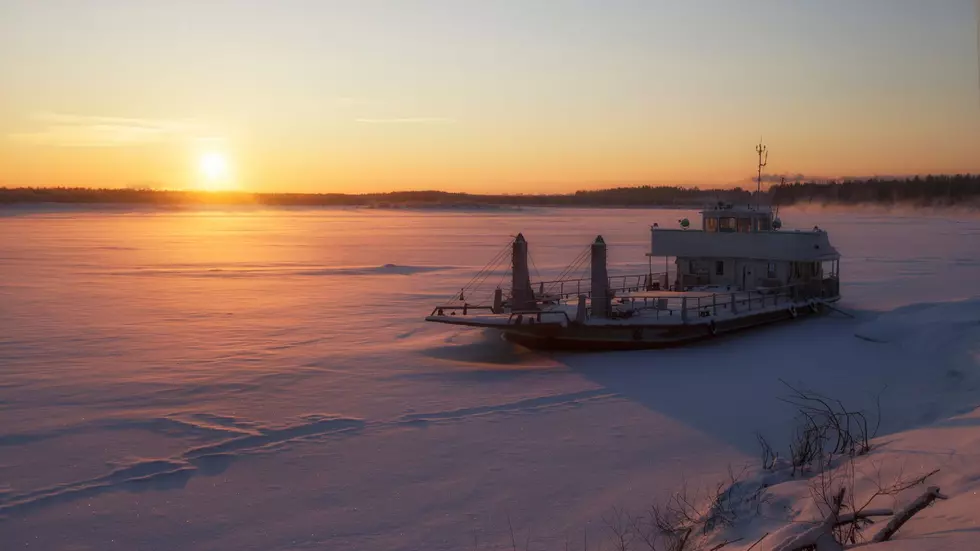
Great Lakes Ships And the Ice: How Do They Continue To Deliver?
I've fallen down a rabbit hole of Life on the Great Lakes as a Freighter. There's a lot of social media accounts dedicated to the ships of the Great Lakes. Actually, there IS a "Ships of the Great Lakes" page on Facebook that is really interesting, and they're really informative about the specific ships, the history of the boats, and what life looks like out on the (mostly) open waters of the Great Lakes.
But recently, with our cold snap, the waters have begun to freeze over, and now I've been sucked into how ship life still manages to function when the ships are having to move through ice that's basically turned into concrete.

First of all, let's start with the ships themselves... they're huge. It's a new concept for a transplant like me, who grew up in a landlocked state, and the biggest body of water around me... I could still see ALL the way across without even squinting. I've only ever been to the ocean twice and seen those big cruise ships from a LONG way away.
So grasping just how big shipping ships are is still tough for me to comprehend.
The biggest ship is the MV Paul R. Tregurtha at 1,014 feet long, launched in 1981 (which I learned about ON the Ships of the Great Lakes Page). She hauls mostly coal and iron ore, which still runs, despite the lakes freezing over.
Bigger ships like the "The Big Paul" there, have enough weight, and horsepower to push through a lot of the ice that it would encounter, even when empty.
BUT, the truth is, some smaller ships do get stuck in the ice. Early on, when the first ice-breakers were on the lakes, they still managed to get stuck at times. One post showed the Chief Wawatam and Ste. Marie ferries stuck in the ice between St. Ignace and Mackinaw City. It's not clear when this photo was taken, but since the ferries were still rolling, we'd guess it was before the Mackinac Bridge was finished in 1957.
But most of the time, ships can continue to sail because the U.S. Coast Guard has their Ice Breaking ships ready to go, and lead the way through icy waters. And I have to be honest, I always thought the Coast Guard was relatively slow when it came to activity outside of ocean rescues. But seeing them work so much in and around the Great Lakes has definitely made me respect them quite a bit more.
Below, you can see a photo of the USCGC Neah Bay breaking the ice, and the convoy of ships behind it, delivering more than 300 Tons of cargo into Lake Erie through the Detroit River.
But maybe one of the coolest ways I've seen for ships to make it through the ice (and free themselves from port) is the Barge Michigan Trader, and many of her sister ships in the VanEnkevort Tug & Barge fleet.
They're what's called an ATB, or "Articulated Tug Barge." Basically, the back of the ship is its own tug boat and ice breaker! So, as shown in the images below of the Michigan Trader, her tug will detach from the barge, and break the ice around the ship to free itself.
I've seen tugs pulling and pushing barges on major rivers before, but never to this extent on icy waters. This is really cool.
Many of these ships on the Great Lakes are more than 30 or 40 years old, so some of the technology they still use (aside from upgraded navigation equipment) is still what they used when they were launched. Which goes to show, the resilience of the icy fleets of the Great Lakes is something that has (and will) stand the test of time.
Five Ghost Ships of the Great Lakes
More From Mix 95.7









